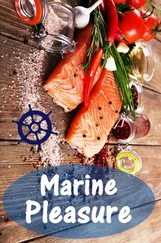Subsequently, I wrote Bivalve Molluscs , 3a comprehensive book covering all major aspects of this important class of invertebrates, which was published by Blackwell Publishing UK in 2003. It was well received by reviewers and did well in terms of sales, and in 2011 I was invited by Wiley Blackwell to prepare a second edition, Marine Bivalve Molluscs , 4which was published in June 2015. Work on these two volumes entailed a large amount of reading in diverse fields, including biology, ecology, physiology, genetics, culture, disease and public health – an experience that proved invaluable in the preparation of this new volume on marine mussels.
It is now almost 30 years since I edited The Mussel Mytilus . In the interim, there have been many significant advances, along with the emergence of new areas of research in marine mussels, one reason for which is the range of new techniques being applied in their biology and ecology. For example, DNA genetic markers play an increasingly important role in disease diagnosis, detection of different strains of pathogenic bacteria ( Chapter 11), identification and tagging of larvae ( Chapter 5) and the completely new area of bivalve genomics ( Chapter 9). Also, isotope ratios and fatty acid signatures are being used to identify dietary food sources in bivalves, while measurements of stable oxygen isotopes in fossil and contemporary bivalve shells are allowing reconstruction of past sea surface temperatures. Trace elemental fingerprinting, based on naturally occurring elements in bivalve shells, is being used to assess larval origins and trajectories, while fluorescence in situ hybridisation (FISH) combined with cell sorting can identify and rapidly count and sort larvae of several bivalve species in diverse plankton samples. Immunosensors – devices that use specific biochemical reactions mediated by antibodies to detect chemical compounds – may soon replace liquid chromatography, which has long been the official method for detection and quantification of algal toxins in bivalves ( Chapter 12). Also, a wide range of molecular biomarkers are increasingly being used to identify exposure to certain chemicals, provide information on spatial and temporal changes in the concentration of contaminants and indicate environmental quality or occurrence of adverse ecological consequences ( Chapter 8). Another significant development has been the increasing use of sophisticated mathematical models to describe and predict growth and bioenergetics of individual animals, to track larval movement and recruitment, to study contaminant bioaccumulation in marine bivalves and to predict geographic range of species in global warming scenarios ( Chapters 3, 4, 6and 8). Models are being employed to describe carrying capacity and environmental effects in mussel culture areas ( Chapter 10) and to simulate disease and forecast outbreaks ( Chapters 11and 12). Another area that has changed is the management of culture systems, where the emphasis is now more on the use of legislation and control measures, particularly in Europe, North America, Australia and New Zealand ( Chapter 10). This also pertains to the control of diseases in bivalves and to hygiene standards for shellfish and shellfish waters.
This volume does not focus solely on marine mussels in the genus Mytilus but also incorporates research on other commercially important marine genera such as Perna , Aulacomya and Choromytilus , as well as noncommercial genera such as Modiolus , Geukensia , Brachidontes and hydrothermal vent Bathymodiolus species. It therefore has a broader scope and content than The Mussel Mytilus and consequently should not be regarded as a second edition.
Chapter 1covers the phylogeny and evolution of the Bivalvia and Mytilida. Chapter 2provides a detailed description of external and internal anatomy. Chapter 3describes global and local distribution patterns and the physical and biological factors influencing marine mussel distribution and abundance, with a section on climate change and the actual and potential impacts of global warming, ocean acidification and hypoxia on marine mussels. Chapter 4covers factors influencing filter feeding, together with dietary components and assimilation efficiency, and presents new material on the impacts of mussels on marine ecosystems. Chapter 5deals with reproduction, larval development and settlement, and has new sections on sperm–egg interaction, larval dispersal, connectivity, identification and abundance estimates. Chapter 6covers methods of measuring growth, the mussel shell as a marine archive and exogenous and endogenous modulators of growth. The processes of circulation, respiration, excretion and osmoregulation are described in Chapter 7, while Chapter 8covers types and levels of contaminants in the marine environment, contaminant absorption and assimilation, kinetic modelling, mussel monitoring programmes and biomarkers of pollution. Chapter 9describes the application of genetic methods, population genetics, global breeding programmes and the relatively new area of bivalve genomics. The fundamentals of mussel aquaculture are dealt with in Chapter 10, focusing on a number of key mussel species for detailed treatment and the effects of mussel culture on the environment; it includes a section on facilitating sustainable aquaculture development. Chapter 11deals with diseases and parasites, with a large amount of new information on diagnostic methods and the diverse defence mechanisms utilised by mussels. Finally, Chapter 12looks at the role of mussels in disease transmission to humans, with sections on production and processing controls, regulation of monitoring and quality control, including the HACCP system.
1 1Bayne, B.L. (ed.) (1976) Marine Mussels: Their Ecology and Physiology. Cambridge University Press, Cambridge.
2 2Gosling, E.M. (ed.) (1992) The Mussel Mytilus: Ecology, Physiology, Genetics and Culture. Elsevier Science, Amsterdam.
3 3Gosling, E. (2003) Bivalve Molluscs: Biology, Ecology and Culture. Blackwell Publishing, Oxford.
4 4Gosling, E. (2015) Marine Bivalve Molluscs, 2nd edition. John Wiley & Sons, Chichester.
I benefited greatly from the assistance and knowledge of librarians at the Hardiman Library of the National University of Ireland, Galway.
A book like this is in many ways as good as its illustrations, and I thank those who provided figures: Philippe Archambault, Sara Barrento, Brian Beal, Guisla Boehs, Frank Alberto Ocaña Borrego, Craig Burton, Thomas Carefoot, Noèlia Carrasco, Antonio Checa, Siu Gin Cheung, John Costello, David Cowles, Jeff Davidson, Elizabeth Fly, Gael Force Fusion, Argyll, Scotland, UK, Laas Hiebenthal, Jade Irisarri, Jaafar Kefi, Anja Monika Landes, Ionan Marigomez, Katherine McFarland, Ivona Mladineo, Arthur Morris, Jorge Navarro, Sandra Noel, Jiří Novák, Aida Ovejero, Bernadette Pagoda, Peter Petraitis, David Polo, Guido Poppe, Chris Richardson, Mindy Richlen, Gianluca Sarà, Julia Sigwart, Tore Strohmeier, Tianli Sun, Cindy Lee Van Dover and David Wethey.
Thanks also to the team at John Wiley & Sons, Ltd: Sonali Melwani, Kerry Powell, Rebecca Ralf, Blesy Regulas, and, in particular, Sivasri Chandrasekaran, for their encouragement and feedback on the long course from commissioning to proofs.
Finally, and above all, I wish to thank my son, Marcus Gosling, who provided invaluable technical support and graphics expertise, and my partner, Jim, an exemplar of diligence and support.
1 Phylogeny and Evolution of Marine Mussels
Introduction
The phylum Mollusca is the second largest phylum of animals, with about 130 000 named extant species and 70 000 described fossil species (Haszprunar et al . 2008). While most of these are marine, many live in freshwater and terrestrial habitats. Research has indicated that molluscs had a terminal Precambrian origin, with rapid divergence occurring in the Cambrian era some 540–560 million years ago (Stöger et al . 2013). All molluscs have a soft body that, with the exception of some groups (see later), is protected by a hard calcium shell. Inside the shell is a heavy fold of tissue called the mantle that encloses the internal organs of the animal. Another feature of the phylum is a large muscular foot that is generally used for locomotion. Although most molluscs share this basic body plan, the group is characterised by a great diversity of form and habit.
Читать дальше












